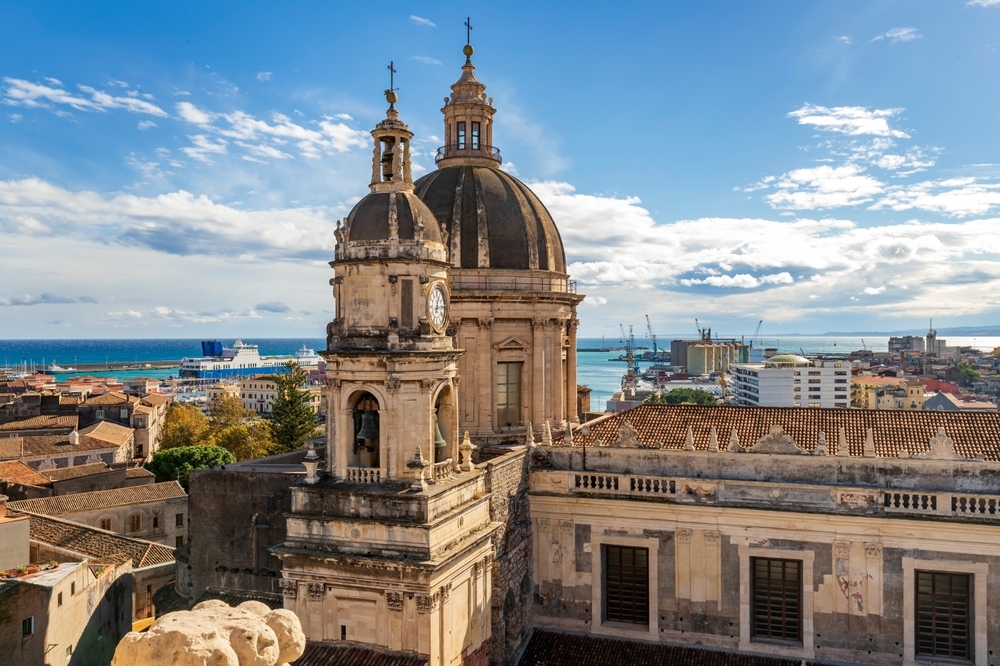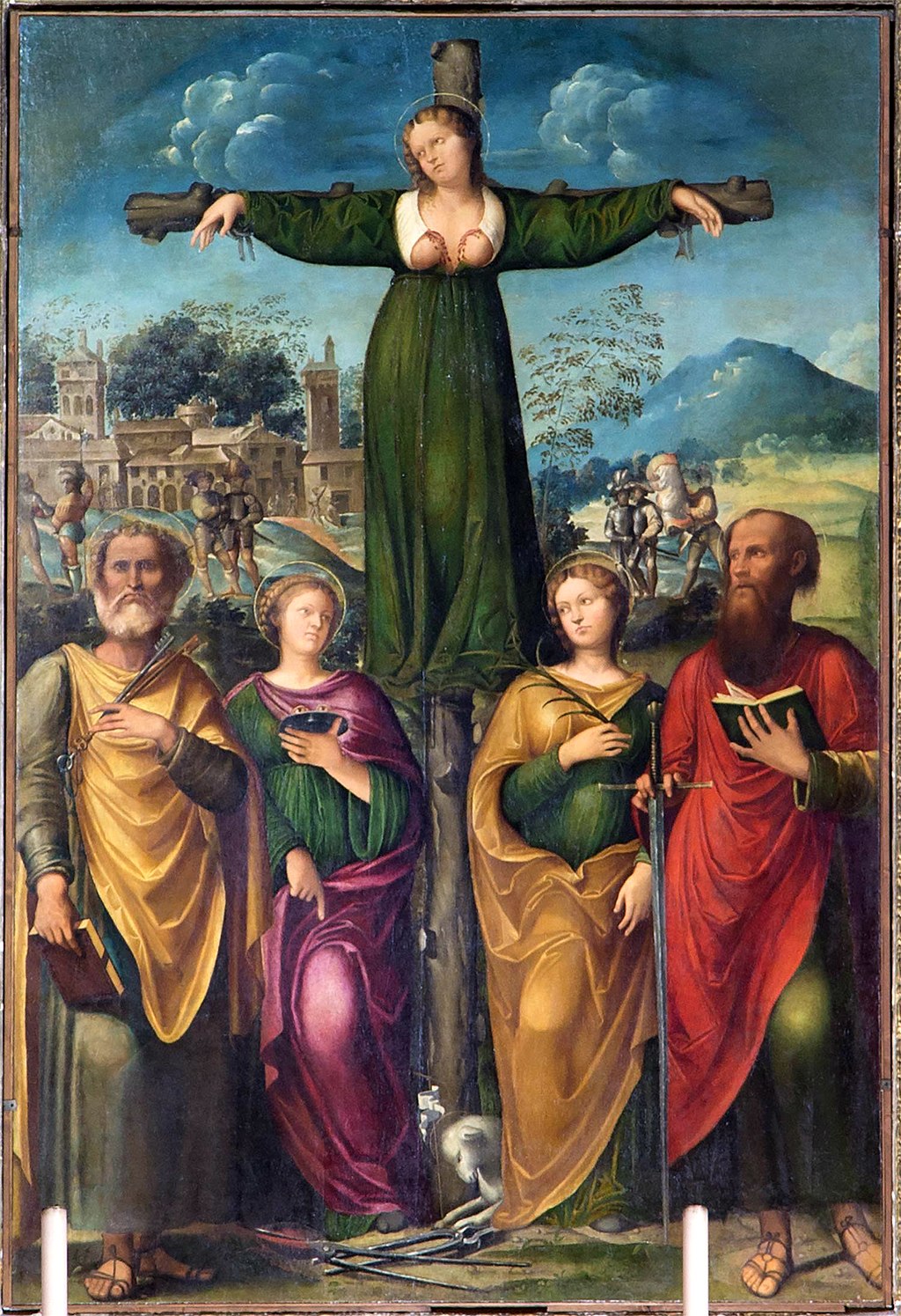Cassatella di Sant'Agata – “Saint Agatha’s Breasts”
Cassatella di Sant'Agata – “Saint Agatha’s Breasts”
In Sicily, there is a well-known pastry known as Cassatella di Sant'Agata, translated as, Saint Agatha's Breasts. Named after Saint Agatha, an early Christian martyr who was tortured by having her breasts cut off, these round shaped sweets are made of sponge cake, soaked in Rosolio (a traditional Italian liquor), and filled with ricotta cheese, chocolate drops, and candied fruit - such as oranges or citrons and then coated with a white icing and topped with a candied cherry.
Saint Agatha is the patron saint of Sicily. Her story is a rather tragic one. According to a 13th-century collection of hagiographies, or lives of the saints, compiled by Jacobus de Voragine, known as the Golden Legend, Agatha was a girl from a rich, noble family who at the age of 15 made a vow of virginity. Her beauty attracted the amorous attention of a Roman prefect Quintianus who wished to make Agatha his wife. This was during the Decian Persecutions around 250 AD, when Roman Emperor Decius issued an edict ordering everyone in the empire to perform a sacrifice to the Roman Gods. Christians defied these orders and were targeted for not abiding by the law. Some Christians fled, some bribed officials to obtain certificates of sacrifice, while many others stood firm in their faith, facing persecution, imprisonment, and even death. This was the beginning of the persecution of Christians throughout the Roman Empire.

Agatha’s rejection of Quintianus’ marriage proposal caused him to seek action. He was determined to marry her. Knowing Agatha to be a Christian, he reported her to the authorities. Quintianus expected Agatha to abandon her Christian faith and give in to his demands when faced with torture and possible death, but Agatha simply reaffirmed her belief in God by praying: "Jesus Christ, Lord of all, you see my heart, you know my desires. Possess all that I am. I am your sheep: make me worthy to overcome the devil." When this failed, he sought further action and sent Agatha to a brothel, where she was imprisoned. He was sure this would break her; however, the punishment failed, and Agatha remained a Christian.
Quintianus tried one last time to win Agatha. He sent for her and them pleaded with her and finally threatening her. With that also failing, he finally had her imprisoned and tortured. She was stretched on a rack, torn with iron hooks, burned with torches, and whipped and finally had her breasts removed by tongs. Finally, she was ordered to be burned at the stake.
On the day of her execution, an earthquake prevented her execution from happening, and she was returned to prison, where according to accounts St. Peter the Apostle appeared to her and healed her wounds. Soon after Agatha died in prison.
She was made a saint soon after and confirmed by Pope Gregory in the 11th century. Her feast day is February 5th.
Her connected to Sicily began a year after her death when the Mount Etna volcano which is located outside of Catania, a major city in Sicily, erupted, and a fiery river of lava threatened to engulf the city. The people of Catania turned to Agatha for help, and her venerated veil was placed before the lava flow. Miraculously, the lava stopped, and the city was spared. Because of this miracle, St. Agatha was declared the patron saint of Catania. Her cult spread throughout Sicily, and soon she was honored as the patron saint of the entire island.

To this day, the citizens of Sicily celebrate Saint Agatha. Each year from February 3-5, Sicilians commemorate her with The Festival of Saint Agatha (La festa di sant'Agata). This is the most important religious Festival in Catania. It is among the largest Catholic religious festivals in the world, in terms of participants and spectators.
Sicilians celebrate Saint Agatha for her purported intercession to avert danger during eruptions of Mount Etna, earthquakes, and some epidemics that had affected Catania, as well as her commitment to resist Pagan oppression.
The three day festival begins with a procession known as "della luminaria" where the Cannalori, sixteen large candles in baroque gilt casings, proceed from the Church of Sant'Agata alla Fornace to the Cathedral of St. Agatha. Each of the sixteen candelora represents one of the medieval guilds of the city. Festivities continue followed by music and fireworks.
The next day, after the Messa dell'Aurora (Mass at Dawn), a reliquary-bust of St. Agatha is carried by carriage from the cathedral and is pulled through the neighborhoods, passing places associated with the life of the saint. The Sicilian followers of Saint Agatha wear a traditional white tunic tied at the waist with a rope. The celebrations continue through the night. The celebration, as in all Italian festivals, featured delicious local foods including arancini (rice balls) and beccafico sardines (with breadcrumbs, pine nuts and raisins) and Cassatella di sant'Agata – “Saint Agatha’s Breasts”.
Recipe for Cassatella di sant'Agata – “Saint Agatha’s Breasts
St. Agata is the patron saint of breast cancer patients, rape victims, and those suffering from fire.
Prayer to St. Agatha, Patron Saint of Breast Cancer
Saint Agatha, blessed virgin and martyr.
You are honored as the patron of breast cancer.
You suffered pain and torture in your devotion to the Lord.
Protect me from breast cancer
and intervene before God almighty,
and pray for me so that I may be cured.
Heal me and comfort me, and mercifully
grant me protection from all cancer.
Saint Agatha, pray for me.
Amen








